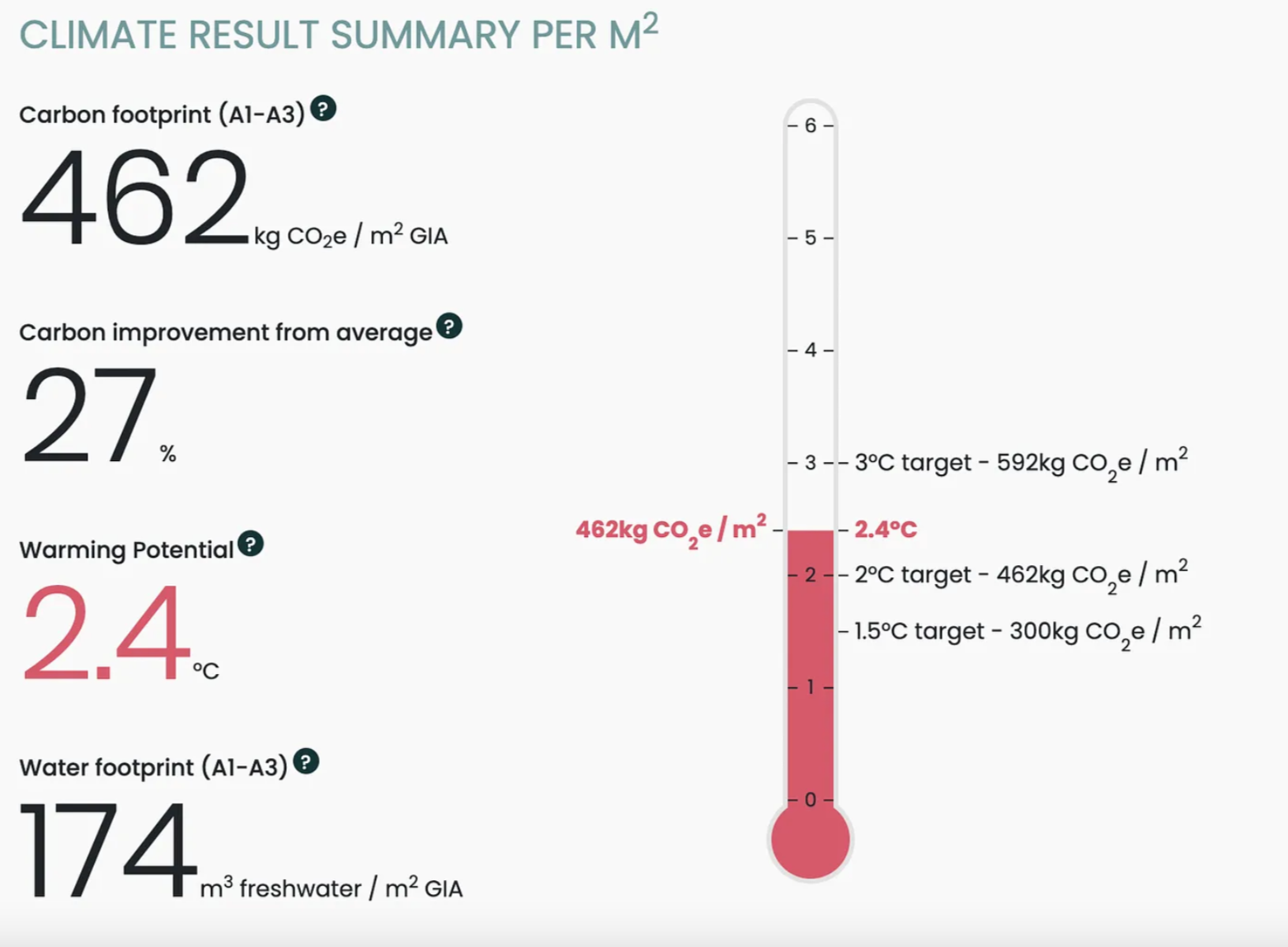Aligning material selection with global climate targets
Climate change and climate solutions are all over the news. You’ve probably heard the story a million times already: The world is emitting so much that our future is starting to look grim.

At 2050 Materials we are not doomsayers. We of course understand that the world needs solutions, but our approach is simple: stay positive, and build tech to transition to the low-carbon economy.
Why is it so important to stay below 1.5 degrees?
1.5 degrees is the global climate change goal world leaders agreed to strive for. By limiting the planet’s warming to 1.5 degrees Celsius, or 2.7 degrees Fahrenheit, by 2100, the hope is to avoid severe climate disruptions that could exacerbate hunger, conflict and drought worldwide. So, pretty important stuff to avoid.

UNEP GAP report 2021
What does that mean for construction?
The construction sector overall is responsible for 40% of the world’s emissions. That means investors, owners, architects, contractors, and other stakeholders have a huge opportunity to contribute to a world that looks better for all of us.

Specifically, at 2050 Materials we are here to help the construction sector design using more sustainable building materials. To do that, we simplify data around construction products (check it out here) but we also create tools and metrics that allow practitioners to communicate the impact of each decision they make.
Below, you can learn more about how we calculate the “Warming Potential” metric, a metric that aims to show what climate scenario your chosen design is contributing to.

The Climate Result of 2050 Material’s Embodied Carbon tools, indicating that the chosen design contributes to a world that heats up by 2.4 degrees by 2100.
How can one building cause so much warming?
You are right, it can’t. In the same way that a single person skipping a transatlantic flight cannot reverse climate change, a sustainable building is not the solution to all our problems.
It is however, one piece of the puzzle. At 2050 Materials, we think that every change to a more sustainable system is important.
The Warming Potential was developed exactly to show what would happen if every building was designed in a specific way. It is a metric that tries to communicate impact and contribution on a high level, and a conversation started on how we can do better.
The data behind the Warming Potential
To calculate the Warming Potential of a building, one needs to benchmark the emissions on a normalized unit and then compare those to building emissions that correspond to each climate scenario. To do that, we perform the following steps:
- Compute the embodied carbon footprint of the building based on the A1-A3 GWP of the materials selected, taking into account their quantities.
- Divide the emissions by the Gross Internal Area (GIA) to get the footprint per meter squared.
- Compare those emissions per m2 to a benchmark set by LETI for net-zero (which we consider to be aligned with 1.5 degrees of warming). This is dependent on the type of building.
- Extrapolate the 2 degree and 3 degree warming benchmarks by using the required global emissions reductions from 1.5 degrees to each scenario accordingly. To do this, we utilize data from the UNEP GAP 2021 report (Table ES.1).
- Calculate the Warming Potential for the material configuration selected.
Assumptions
As in all models, we make certain assumptions which allow us to compute the warming potential. The most important assumptions to keep in mind when using the data in these tools are:
- In order to calculate Warming Potential contribution, we assume that business-as-usual proceeds in the economy, and all buildings are build with the same carbon intensity as the configuration selected.
- We only take into account life-cycle stages A1–A3 (Manufacturing of raw materials) for now. Other life-cycle stages (transport, end of life, etc.) can have a significant impact on the embodied carbon of a building.
- We assume the net-zero target by LETI is in line with a 1.5 degrees scenario of warming.
- We use the relative reduction requirements indicated for global emissions, and apply them to adjust the LETI targets to 2 and 3 degrees of warming.
Feedback & Improvements
At 2050 Materials, we take feedback from our users very seriously. We know this model isn’t perfect, but we think that it can be, with your contribution and feedback.
Reach out to us at info@2050-materials.com to let us know what you think, and to suggest any improvements to this or other models we provide.
The 2050 Materials team
Related articles

Climate-Resilient Materials for the Built Environment: A Data-Centred Prime
As climate volatility intensifies, resilience metrics are fast becoming as critical as carbon data in material selection. This article outlines why adaptation is now a design imperative, how materials can be evaluated through a systems lens, and what KPIs project teams should demand. From self-healing concrete to fire-rated façades, we present a structured taxonomy of resilient materials, explain how to embed this intelligence into digital design workflows, and propose next steps for specification, benchmarking, and procurement.
Read more
The Most Interesting Low Carbon Products in Office Design
In this article and collection, we highlight 11 outstanding products that contribute to a lower carbon footprint in office design.
Read more
Top Low Carbon Building Boards: Performance, Benefits, and Use Cases
The building boards highlighted in this article and collection showcase low-carbon innovation in modern construction.
Read more